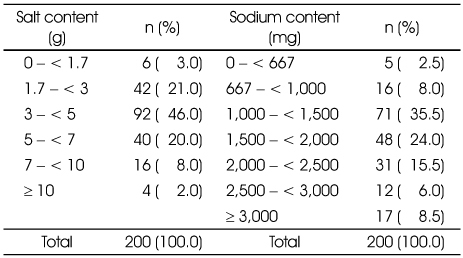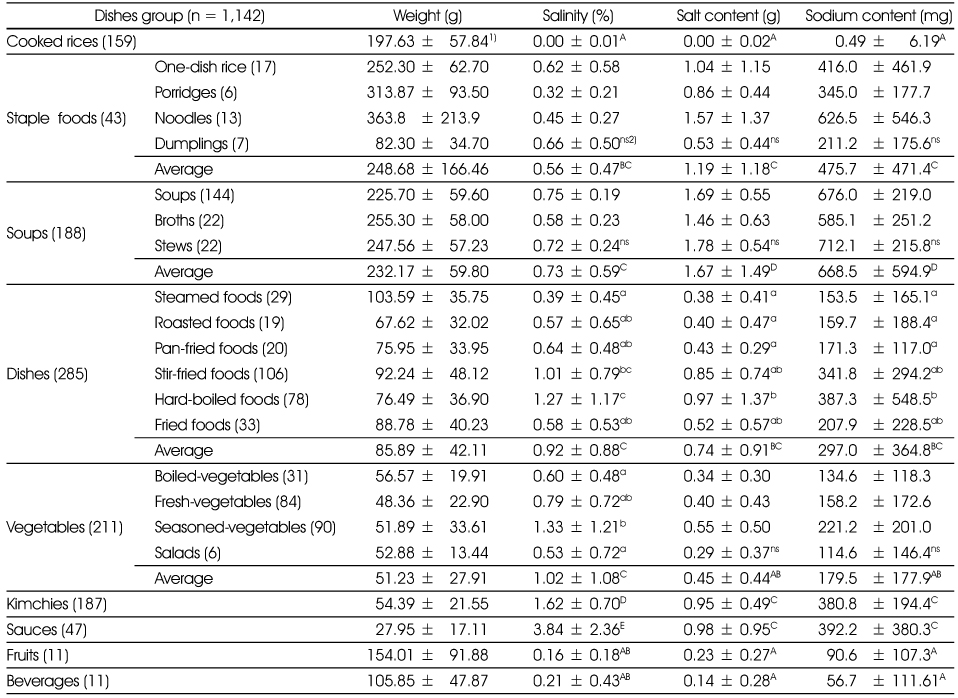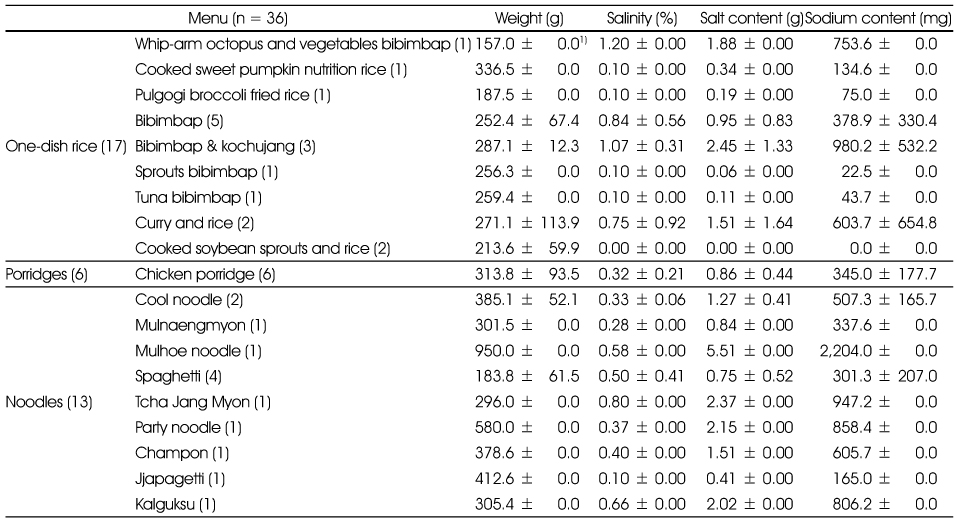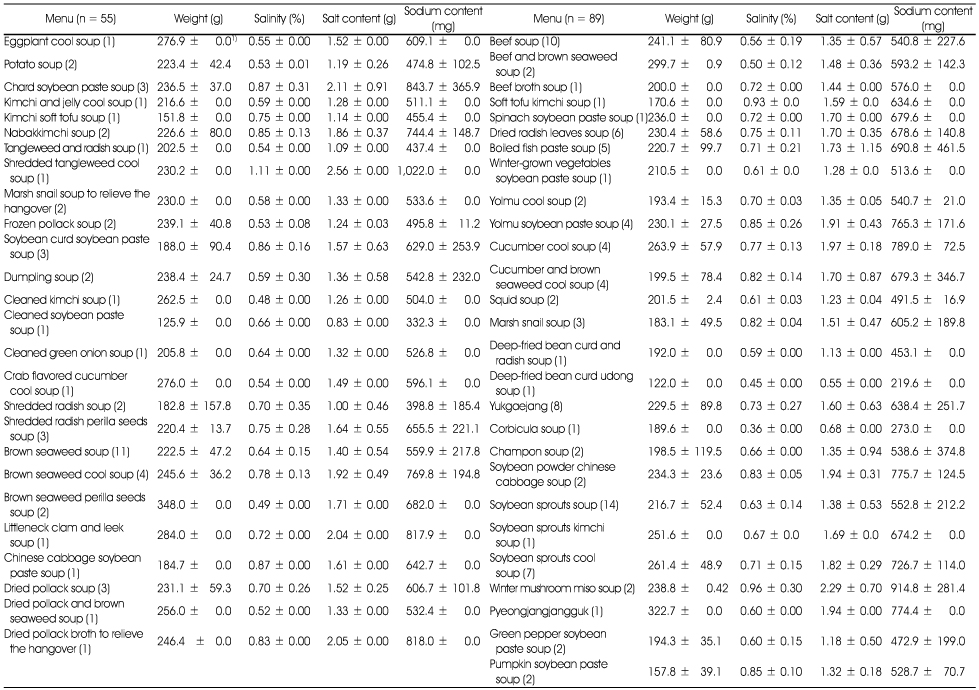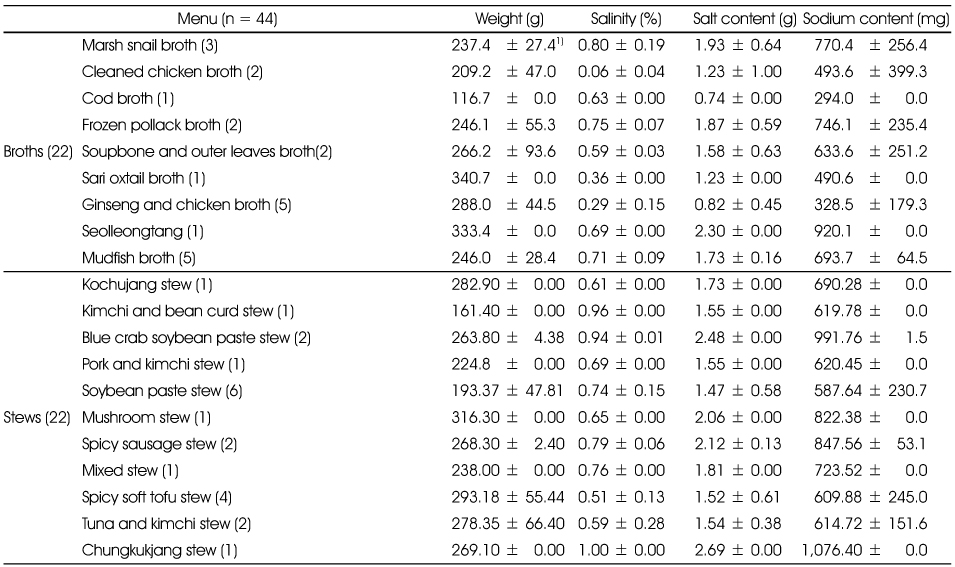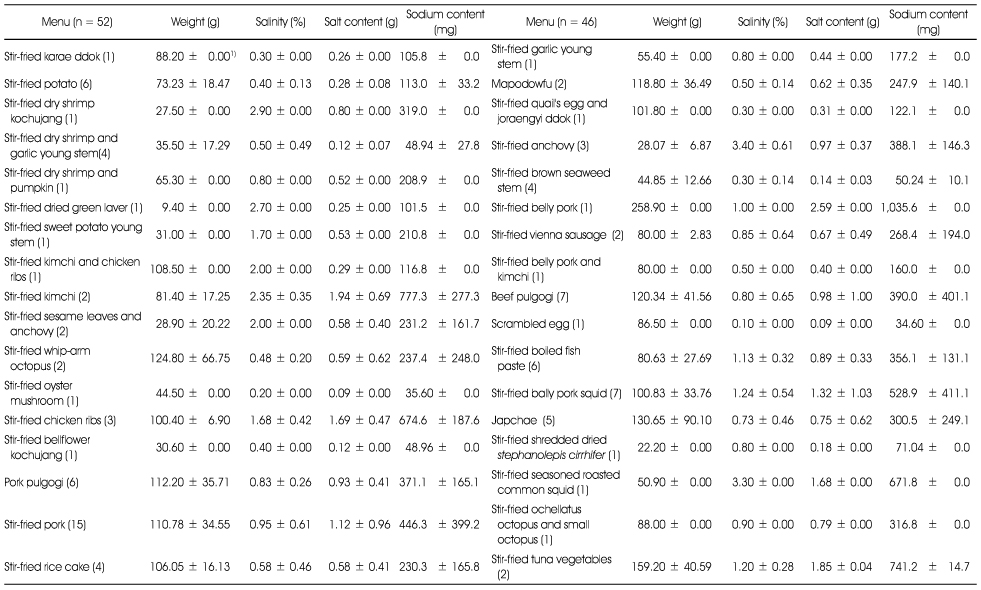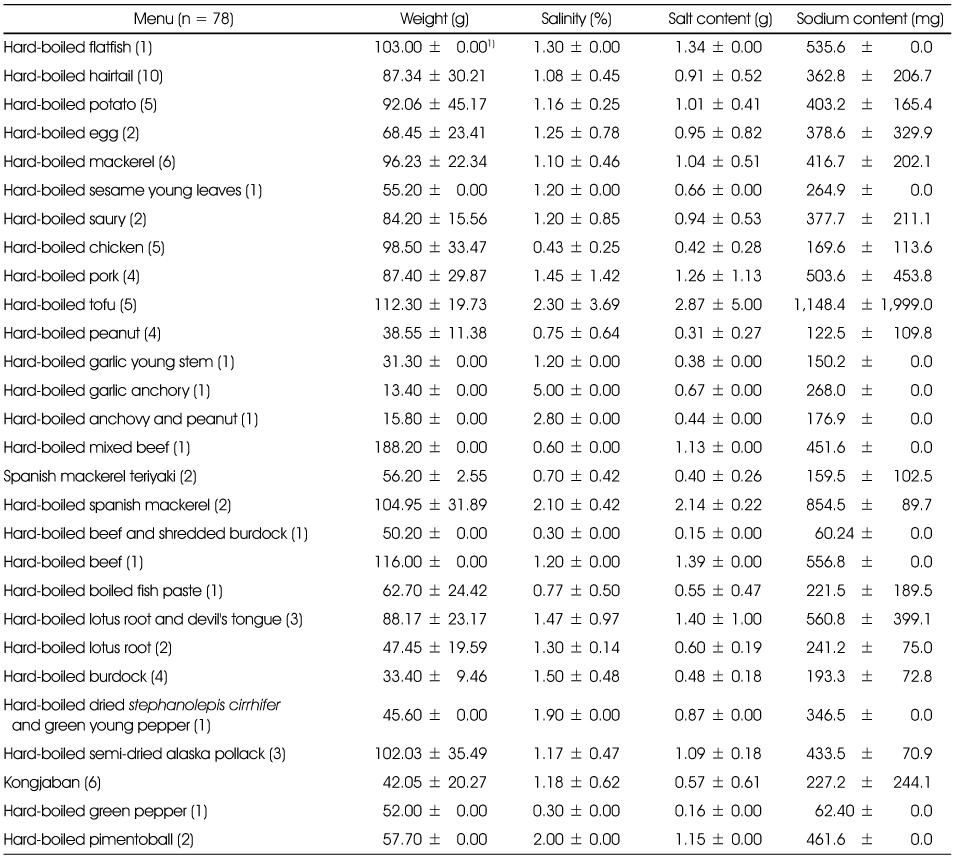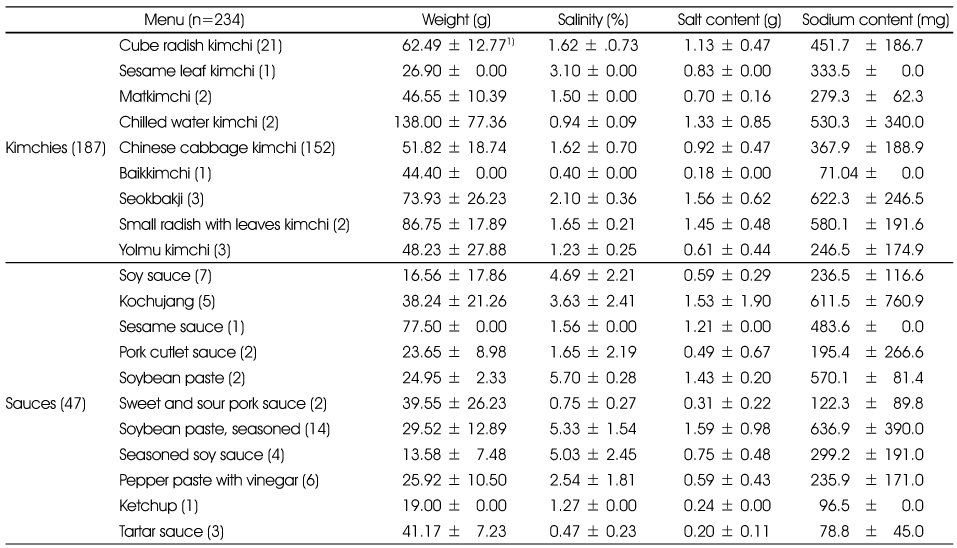References
1. Cho YY. Practice guidelines for reducing salt intake. Korean J Community Nutr 2002. 7(3)394–400.
2. Chobanian AV, Hill M. National heart, lung, and blood institute workshop on sodium and blood pressure. A critical review of current scientific evidence. Hypertension 2000. 35(4)858–863.
3. Cook NR, Cohen J, Hebert PR, Taylor JO, Hennekens CH. Implications of small reduction in diastolic blood pressure for primary prevention. Arch Intern Med 1995. 155(7)701–709.
4. Fregly MJ. Estimates of sodium and potassium intake. Ann Intern Med 1983. 98(5 Pt 2)792–799.
5. Hall JE. The kidney, hypertension, and obesity. Hypertension 2003. 41(3)625–633.
6. He FJ, MacGregor GA. Effect of modest salt reduction on blood pressure: a meta-analysis of randomized trials: implications for pubic health. J Hum Hypertens 2002. 16(11)761–770.
7. Kim JH, Choi MK. Salt intake behavior and blood pressure: the effect of taste sensitivity and preference. J Korean Living Sci Assoc 2007. 16(4)837–848.
8. Kim KS, Shin DC, Lee SJ, Kim HK. A study on salt intake and urinary sodium excretion by groups educated regarding low salt diet. Korean J Nutr 1980. 13(4)187–194.
9. Kim HH, Jung YY, Lee YK. A comparison of salty taste assessments and dietary attitudes and dietary behaviors associated with high-salt diets in four regions in Korea. Korean J Community Nutr 2012. 17(1)38–48.
10. Kim YS, Paik HY. Measurement of na intake in Korean adult females. Korean J Nutr 1987. 20(5)341–349.
11. Korea Food & Drug Administration. 2011 Food & drug statistical yearbook 2011.
12. Kumanyika SK. Long term effects of dietary sodium reduction on cardiovascular disease outcomes: observational follow-up of the trials of hypertension prevention (TOHP). BMJ 2007. 334(7599)885–893.
13. Lee HJ, Lee CH, Lee KS, Jung YG, Ha SH, Jung YY, Kim DS. Survey on sodium contents in meals of school foodservice and sodium intakes of students in Busan and Gyeongsangbuk-do. J Korean Soc Food Sci Nutr 2010. 39(1)85–91.
14. Lee HS. Studies on salt intake through eat-out foods in Andong area. Korean J Soc Food Sci 1997. 13(3)56–60.
15. Lee YK, Lim HS, Jeon SH, Kim YG, Shin DS, Ko YS, Chung HJ, Heo YR, Chae IS. Determination of sugar and sodium intakes of school children by analysis of sugar and sodium contents in school foodservice in the Daegu/Gyeongnam and Gwangju/Jeju are. The report of National Institute of Food and Drug Safety Evaluation 2009.
16. Meneton P, Jeunemaitre X, Wardener HE, Mac Gregor GA. Links between dietary salt intake, renal salt handling, blood pressure, and cardiovascular diseases. Physiol Rev 2005. 85(2)679–715.
17. Ministry of Health & Welfare. Korea Center for Disease Control and Preventic. Korea Health Statistics 2008: Korea National Health and Nutrition Examination Survey (KNHANESIV-2) 2009.
18. Ministry of Health & Welfare. Korea Center for Disease Control and Preventic. Korea Health Statistics 2010: Korea National Health and Nutrition Examination Survey (KNHANESV-1) 2011.
19. Moon GS, Song YS, Lee CG, Kim SK, Ryu BM, Jeon YS. The study on the salinity of kimchi and subjective perception of salinity in Pusan area. Korean J Soc Food Sci 1997. 13(2)179–184.
20. Moon HK, Choi SO, Kim JE. Dishes contributing to sodium intake of elderly living in rural areas. Korean J Community Nutr 2009. 14(1)123–136.
21. Park MJ. Analysis of salt content in the foods of a industry foodservice operation and eat-out restaurants in the Daegu area, and development plan for a low-sodium diet 2007. Kyungpook National University; 16–35.
MS thesis.
22. Seo HY, Jung BM. Comparison of foodservice management practices in the employee feeding operations of Jeonnam and Chungchong area. Korean J Community Nutr 2004. 9(2)191–203.
23. Shin EK. Development and evaluation of a nutrition education program for sodium reduction based on analysis of sodium intake 2008. Kyungpook National University; 15–31.
Dissertation.
24. Son SM, Huh GY. Salt intake and nutritional problems in Korean. Korean J Community Nutr 2002. 7(3)381–390.
25. Son SM, Huh GY. Dietary risk factors associated with hypertension in patients. Korean J Community Nutr 2006. 11(5)661–672.
26. Son SM, Park YS, Lim HJ, Kim SB, Jeong YS. Sodium intakes of Korean adults with 24-hour urine analysis and dish frequency questionnaire and comparison of sodium intakes according to the regional area and dish group. Korean J Community Nutr 2007. 12(5)545–558.
27. Song MR, Lee KJ. Salinity and consumption patterns of kimchi and soup·stew in Jeonju area. Korean J Food Cookery Sci 2008. 24(1)84–91.
28. The Korea Nutrition Society. Dietary reference intakes for Koreans 2010.
29. Tsugane S. Salt, salted food intake, and risk of gastric cancer: epidemiologic evidence. Cancer Sci 2005. 96(1)1–6.
30. de Wardener HE, MacGregor GA. Harmful effects of dietary salt in addition to hypertension. J Hum Hypertens 2002. 16(4)213–223.
31. World Health Organization. Reducing salt intake in populations 2006.
32. World Health Organization. Primary prevention of essential hypertension: report of a WHO scientific group 1983. Geneva: World Health Organization;
33. World Health Organization. Diet, nutrition and the prevention of chronic disease. Report of a Joint WHO/FAO Expert Consultation 2003. Geneva: World Health Organization;

